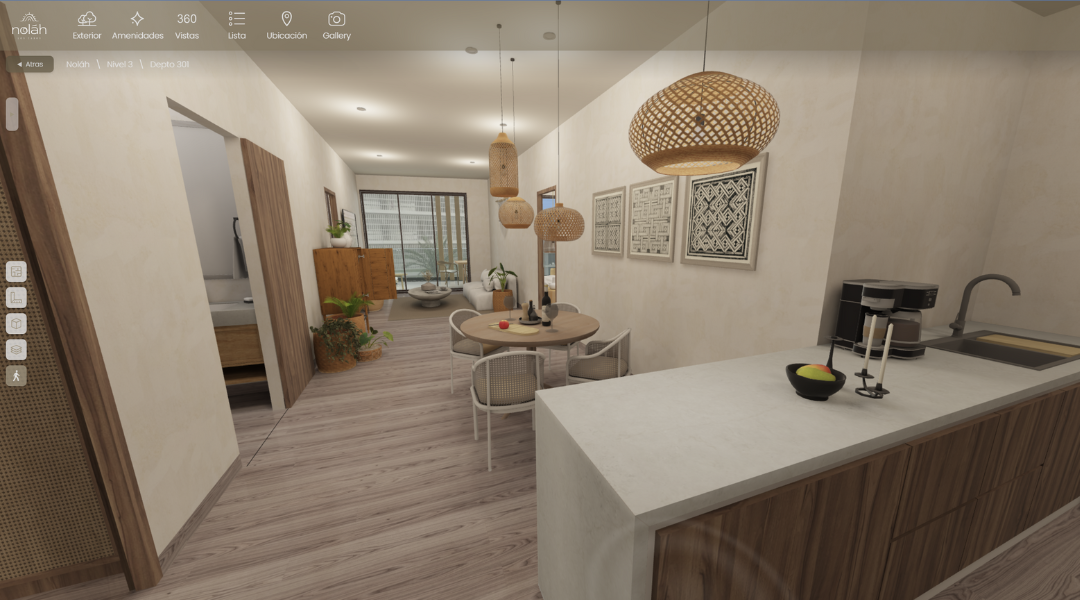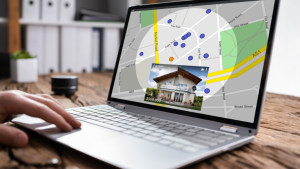I’ve seen how virtual tours in the real estate sector have evolved—from simple panoramic photos to sophisticated real-time 3D virtual tours that excite buyers.
Through this evolution, a critical distinction has emerged that many professionals tend to overlook: the fundamental difference between pre-rendered 360° tours and real-time 3D virtual tours.
There are several differences, which we’ll explore below.
Two Technologies, Two Different Experiences
When someone mentions “virtual tours,” they could be referring to two very different technologies. Understanding the distinction is crucial if you want your projects to stand out.
360° Render-Based Tours are essentially panoramic images stitched together. They offer a static viewpoint where users can look around from fixed positions. Think of them like connected photo galleries where you’re limited to certain points but can rotate your view 360 degrees.
There are two types of virtual tours based on their purpose:
1) If the property is already built:
Virtual Tours with a 360 Camera:
If the property exists, you can use a 360 camera to capture panoramic images from multiple points within the space, then link these points together to create a navigable experience. The global leader in this kind of technology is the giant “Matterport.”
2) If the property has NOT been built:
Virtual Tours with Renders:
If the property hasn’t been built yet, a 3D designer must model each space (living room, kitchen, bathroom, etc.) and then extract rendered images from different angles. These high-resolution JPG images are converted into 360 format and then stitched together using specialized virtual tour software. This creates a “jumping” experience between areas—for example, from the kitchen to the living room, and then to the bedroom.
Real-Time 3D Virtual Tours:
For unbuilt properties, another option is to create real-time 3D virtual tours. Here, a 3D designer models the space and renders it using a real-time 3D engine—typically Hauzd, Unity, or Unreal Engine.
Unlike render-based virtual tours, which limit you to jumping between fixed viewpoints, real-time 3D tours allow users to move freely through the space—walking anywhere, looking in any direction, and interacting with elements in ways that closely simulate physical presence. You can explore the entire space with complete freedom.
Benefits of Real-Time 3D Virtual Tours
Real-time 3D tours elevate the virtual experience in ways that fundamentally change how potential buyers engage with real estate projects—whether it’s an apartment, house, office, or an entire amenity zone.
Freedom creates connection.
Being able to freely navigate a space builds a psychological sense of ownership that static viewpoints cannot match. When users control how they explore a property, they connect more deeply with it.
Exploration drives discovery.
Real-time environments let users investigate the details they care about, crafting a personalized experience that strengthens emotional ties to the project.
Unbuilt properties become tangible.
For pre-construction projects, real-time 3D is the only way to truly let clients “walk through” spaces that don’t physically exist yet.
Technical Features That Make the Difference
Improved depth and spatial perception:
Real-time 3D tours offer a true sense of depth, allowing users to understand the spatial relationships between objects and rooms—far superior to the flat panoramic views of 360° tours.
Interactive navigation:
Users can move freely through the 3D space, choosing their own paths and exploring areas of interest. This level of interactivity isn’t possible with fixed viewpoints in 360° tours.
Accurate measurements and scale:
3D models deliver precise measurements and true-to-scale layouts, which are crucial in real estate, architecture, and engineering. This level of accuracy isn’t available in 360° tours.
Enhanced visualization:
Real-time 3D rendering allows for advanced visual techniques—lighting, shadows, reflections—that create a far more immersive and realistic experience.
Greater informational value:
Real-time 3D virtual tours can embed data within the model, which users can access as they explore. This provides far more information than a standard 360 tour can offer.





